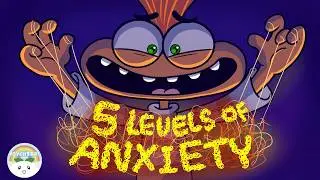7 Signs Someone is Secretly Narcissistic
When people often talk about narcissism (NPD), the tendency is to imagine it in it’s most extreme and most easily recognizable form. But psychology actually says that there are two “faces” to narcissism: one grandiose and exhibitionist (called “overt narcissism”) and another vulnerable and sensitive (known as covert narcissism”).
At first glance, you probably wouldn’t even realize someone is a covert narcissist because of how much more reserved in nature they seem to be than their overt counterparts. But make no mistake, a covert narcissist is still a narcissist, and they can be every bit as manipulative, exploitative, ruthless, and inconsiderate. Here are a few signs.
Here are a few ways to outsmart a narcissist: • 11 Smart Ways To Outsmart A Narcissist
DISCLAIMER: This video is intended for educational purposes only and should not be used to diagnose anyone. If you have been affected or been the victim of narcissistic behavior or abuse, please speak to somebody you trust or seek professional support.
Writer: Chloe Avenasa
Script Editor: Vanessa Tao
Script Manager: Kelly Soong
VO: Amanda Silvera ( / amandasilvera )
Animator: Ayacchi Art ( / ayacchi )
YouTube Manager: Cindy Cheong
References:
Atlas, G. D., & Them, M. A. (2008). Narcissism and sensitivity to criticism: A preliminary investigation. Current psychology, 27(1), 62.
Luchner, A. F., Houston, J. M., Walker, C., & Houston, M. A. (2011). Exploring the relationship between two forms of narcissism and competitiveness. Personality and Individual Differences, 51(6), 779-782.
Rohmann, E., Neumann, E., Herner, M. J., & Bierhoff, H. W. (2012). Grandiose and vulnerable narcissism: Self-construal, attachment, and love in romantic relationships. European Psychologist, 17(4), 279.
Smolewska, K., & Dion, K. (2005). Narcissism and adult attachment: A multivariate approach. Self and Identity, 4(1), 59-68.







![[4K] Rolex Datejust 41 Vs Day-Date 40, DJ41 Mint Green vs DD40 Olive Green | Hafiz J Mehmood](https://images.mixrolikus.cc/video/qQlj598gU-0)























